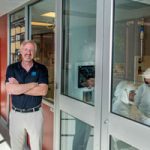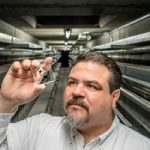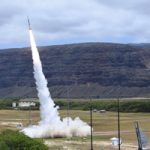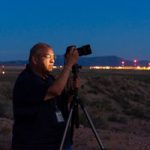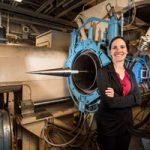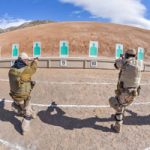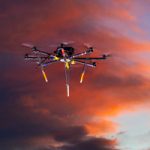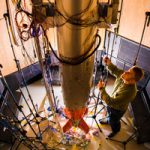Strategic Priority No. 3
Strategic Priority No. 3: Never surprises, always options: Anticipating threats to national security through Intelligence Science
Portable gas detection shrinks to new dimensions
A sensor for detecting toxic gases is now smaller, faster and more reliable, thanks to researchers at Sandia. The sensor’s performance sets it up for integration into a highly sensitive, portable system for detecting chemical weapons. The sensors can also rapidly detect airborne toxins.
Strategic priority No. 2 prepares for future nuclear deterrent
Today, more than ever, there is urgency for Sandia’s Nuclear Deterrence portfolio to implement strategic initiatives that explore, research and refine “big ideas” and innovative approaches for nuclear deterrence on the 15- to 20-year time horizon, and in many cases much sooner. Such initiatives are the focus of our Labs-level strategic priority No. 2 — Maintain an Agile and Effective Nuclear Deterrent.
Sandia launches a bus into space
The bus, which is a device that links electronic devices, was among 16 total experiments aboard two sounding rockets that were launched as part of the NNSA’s HOT SHOT program, which conducts scientific experiments and tests developing technologies on nonweaponized rockets. The flights took place April 23-24 at the Labs’ Kauai Test Facility in Hawaii.
A day in the life of Sandia — 70 years and counting
To mark the 70th anniversary of President Truman’s letter that inspired Sandia to “… exceptional service,” Lab News photographer Randy Montoya spent a full day chronicling the people and work that make the Labs hum from sun up to sundown.
High-speed experiments improve hypersonic flight predictions
When traveling at five times the speed of sound or faster, the tiniest bit of turbulence is more than a bump in the road, said Katya Casper, the Sandia aerospace engineer who, for the first time, characterized the vibrational effect of the pressure field beneath one of these tiny hypersonic turbulent spots.
Training to defend
Sandia’s Security Police Officers go through intense weapons training annually to protect members of the workforce from any possible threat, and that training recently took place at Sandia.
Future hypersonics could be artificially intelligent
A test launch for a hypersonic weapon — a long-range missile that flies a mile per second and faster — takes weeks of planning, and it's uncertain how useful test systems will be against urgent, mobile or evolving threats. But Sandia's hypersonics developers think artificial intelligence and autonomy could slash these weeks to minutes for deployed systems.
B61-12 team reaches milestones in nuclear deterrence mission
Sandia’s B61-12 nuclear weapons team has accomplished several milestones, including the gravity bomb’s final design review and the first production completion of several components for the life extension program. Sandia and LANL presented the B61-12 design for final review to an independent peer-review panel of 12 military and civilian experts last fall.
Sandia aerospace engineer to head national institute
Members of the American Institute of Aeronautics and Astronautics elected Basil Hassan, a senior manager and engineering program deputy, as the group’s next president. The AIAA represents more than 30,000 individual and 95 corporate members from the aeronautics and space community. Basil will begin a yearlong stint as president-elect of the institute in May, and then serve a two-year term as president starting in May 2020.
